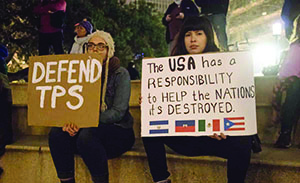ACI Press Writing
When she was 17, Kristi Kollar became pregnant as a result of rape. After battling the economic problems and criticism of those closest, she said yes to the life of little Adeline, who is now “the light and purpose” of her life.
Through the proven platform Save The 1, Kristi says that the person who raped her was a friend of her. He was a “a manipulator that I couldn’t get rid of. He was the type of person who threatened to commit suicide” and blamed others for not supporting him, says the young mother.
She lived a horror story when her friend raped her. To commit his crime, the young man grabbed her neck in the back of his truck choking her, causing her body to shiver completely out of control.
Kristi was in her senior year of high school in Montana (United States), “and had just been accepted to the university of my dreams in New York.” A year earlier, she and her father had become homeless due to a fire and faced the death of people they loved.
“If there was a time that was the ‘wrong’ time to get pregnant, it was this. How could I put more burden on my dad when he was already dealing with so much? What would happen to the university?” Kristi wondered.
The young mother studied in a private Christian school and was part of various extracurricular activities, where many young girls admired her. “What kind of example would it be for them?” she wondered.
These thoughts accompanied her during the seven months in which she hid her pregnancy. But abortion was never an option, she knew that “I had a small person living in me. A life”, and nothing was his fault.
Kristi has always been provided, and despite the doubts that assaulted her, about her graduation and her studies at the university, she was sure that she could not kill a baby just because it was not part of the life plan she had.
“I remember writing a prolife essay (as I did every year) when I was 20 weeks pregnant. I remember her little feet kicking me and his hiccups while writing. Suddenly I stopped and realized that at that point in my pregnancy it is still legal to end a life. I couldn’t imagine feeling such an active precious life within me and still denying its legitimacy,” says Kristi.
Thanks to her small complexion, it was simple to hide her pregnancy; However, three weeks before graduation, the pastor of his church called his father to tell him his suspicions.
She remembers that her father entered her room “and started telling me how much he loved me and how proud he was of me. Then he asked me if I was pregnant and told him what happened. He immediately requested an appointment with the doctor and a meeting with my school and the church,” she said.
At school they were friendly, the doctor did the necessary check-ups and informed him that everything was fine with the girl in his belly, despite not having gone through all the prenatal appointments.
However, in the church it was not the same, they received it with confusion and rejection. The aggressor’s family also attended the same church, so the pastor decided to have a meeting with everyone involved.
“He (the aggressor) admitted what he did in front of everyone. They did nothing. In fact, they tried to pressure us to get married. It was clear that they wanted to hide everything so as not to disturb the church. When I did not agree, they asked me to leave,” she lamented.
Fighting depression and spiritual confusion, because that church was her home for nine years, on July 27, 2018, Adeline Marie Kollar was born.
“The moment I saw her, all the previous pain of the nine months disappeared completely. I really believe that if I didn’t have Abby, I wouldn’t have been able to heal from the aggressions. She was and is the light and purpose of my life.”
Thank God, Adeline
was born well, and with her dad’s support, Kristi was able to follow her dream of going to college and having a life in New York.
Kristi is currently an acting student, single mother and a pro-life activist. She leads a group that defends life at all stages, from conception to natural death. She supports the pregnancy center, and gives talks at public events.
“I guide and attend young girls and I can help with more personal issues such as dealing with issues such as sexual abuse, suicide prevention and teenage pregnancy,” he said.
Kristi is sure that motherhood does not kill dreams, and is not limited to age, “there is always support, even if it does not come from the family or from the closest ones. There are centers, as well as other organizations and volunteers who want to do anything to help.”
“There doesn’t have to be perfect circumstances. Abortion is never the best option,” she concludes.








